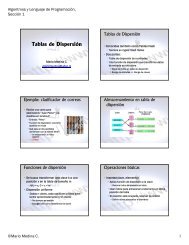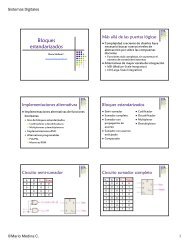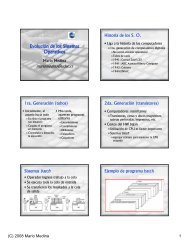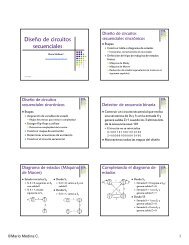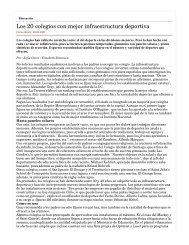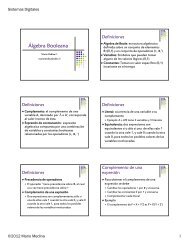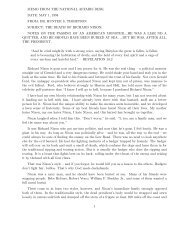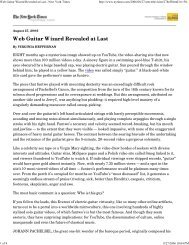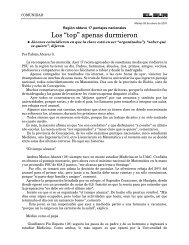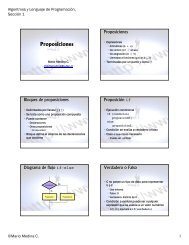A Symbolic Analysis of Relay and Switching Circuits
A Symbolic Analysis of Relay and Switching Circuits
A Symbolic Analysis of Relay and Switching Circuits
You also want an ePaper? Increase the reach of your titles
YUMPU automatically turns print PDFs into web optimized ePapers that Google loves.
•<br />
7<br />
except for an illu str~tive example. Tbe method <strong>of</strong><br />
Pro<strong>of</strong> is that <strong>of</strong>' "perfect induction," i.e., the verification<br />
<strong>of</strong> the theorem for all possi ble cases.<br />
Since<br />
~r Pos~llpte 4 each variable is limited to the values<br />
o Bn d 1, this is B simple rna tter. Some <strong>of</strong> the the orems<br />
may be Droved more elegantly by recourse to p~evious<br />
theorems, Cut the method <strong>of</strong> perfect induction is so univer·sal<br />
thatit is pro ba bly to be preferred.<br />
1. 8. X + Y • y + x<br />
b. xy =yx<br />
2. a. x + (y + &) = (x + y) + g<br />
b. X(YIi) ..<br />
(xy)&<br />
-<br />
3. a • x(y + ii) ..<br />
xy + X5<br />
b. x + yfll<br />
-<br />
(x + y) (x + a-)<br />
-<br />
4. a • l-x ..<br />
x<br />
-<br />
b. 0 + x x<br />
5. a • 1 + x • 1<br />
b. O·x = 0<br />
For example, to Drove theo rem 4A,<br />
X is either ° or 1.<br />
..<br />
note the t<br />
If it is 0, the theorem f'ollows<br />
from 1)ostll1ate 2b; if 1, it folLOWS from rOs'tulate 3b.<br />
•<br />
'Je<br />
shall now define a new ope!'ation to be<br />
oalled negstion. rhe negative <strong>of</strong> a ~inderance X Will<br />
be Written X t <strong>and</strong> is defined as a variable Which is<br />
equal to 1 When X equals 0 <strong>and</strong> equal to 0 When X<br />
I



